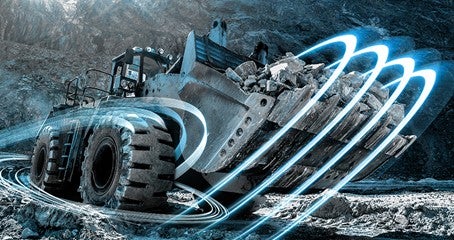
Heavy-Duty engine lubrication: oil categories

Different specifications and norms categorise the complex heavy-duty lubricants market. In this blog, we show you how these categories work.
Oil categories assist workshop owners at finding the perfect oil for his next servicing job and they enable fleet owners to find the most efficient way to lubricate all of their vehicles. But what are these categories and who creates them?
ACEA
European Automobile Manufacturers Association, or ACEA, has developed an oil sequence currently used throughout Europe. The sequence sets measurable benchmarks for engine oils, categorising different oils for different applications. So how does this affect your fleet management?
The oil categories required to keep the engine well lubricated are stated in the manual of every vehicle. This allows you to compare the oils offered by the oil blenders with the requirements of your fleet, enabling you to pick the most suited one for your case.
Currently there are 3 active API oil categories:
| A/B | Service fill engine oils for gasoline and light-duty diesel engines |
| C | Gasoline and light-duty diesel engines equipped with aftertreatment devices |
| E | Heavy-duty diesel engines |
Most heavy-duty off-road applications can be placed under the ACEA E category. They divided the category into different subcategories, currently there are four active ones: E4, E6, E7 and E9. But don’t be fooled by this system, an ACEA E9 oil doesn’t necessarily make it better than oil found within one of the other categories! Each category contains a set of oils that can be used to service various types of vehicles, meaning that they are categorised by application, not by quality.
The currently active E4, E6, E7 and E9 categories have a few baseline properties in common:
- stay-in-grade: all oils retain their viscosity over a range of different temperatures, from cold start to operational temperatures
- different adjustable properties: piston cleanliness, wear control, soot handling and lubricant stability
- can be used within: EURO I, II, III, IV and V engines or STAGE I, II, IIIA, IIIB, IV, V for off-road machinery
The scheme below shows the engine oil properties and usage per ACEA category.
| High SAPS | Low/Mid SAPS | |
| Significantly extended oil drain performance | E4 · Some EGR engines · Some SCR units without DPF · Can be used with high-sulphur diesel | E6 · Engines with EGR · Engines with DPF/SCR NOx · Only low-sulphur diesel |
| Extended oil drain interval | E7 · Most EGR engines · Most SCR units without DPF · Additional piston cleanliness · Additional bore polishing · Can be used with high-sulphur diesel | E9 · Most engines with particulate filters or SCR · Engines with DPF · Only low-sulphur diesel |
Typically on-road: Euro V Typically off-road: Stage IIIA | Typically on-road: Euro V/VI Typically off-road: Stage IIIB, Stage IV/V |
The 2016 update: answering market trends
Technological advancements are the main driver behind the development of new ACEA oil categories and oil category updates. The most recent addition was the ACEA 2016 update; this update included different changes for all of the four current oil categories:
- new biodiesel test to ensure biodiesel compatibility: ACEA E6 and E9
- new biodiesel oxidation test: ACEA E4/ E6/E7/ E9
- new formulations to meet the latest European safety regulations (REACH): ACEA E4/ E6/E7/ E9
- changed test to allow testing for lower soot loading: ACEA E9
API
API developed develops oil categories based on different product properties for the American industry. One of the main differences between the oil categories is that API categories are backward compatible. Meaning that an API CK-4 oil can be used within a vehicle that previously was serviced with an older oil categorised under API CJ-4, CI-4… Currently there are four active oil categories for heavy-duty on-road applications:
CH-4
| · 1998 exhaust emission standards · High-sulphur diesel |
CI-4
| · 2004 exhaust emission standards · Protection of EGR systems · High-sulphur diesel |
CJ-4
| · Tier 4 off-road exhaust emission standards · Protection of DPF systems · Low-sulphur diesel |
CK-4
| · Most recent category · Tier 4 off-road exhaust emission standards · Low-sulphur diesel · Additional protection against oxidation, shear and aeration · Increased resistance against engine wear, piston deposits and oil thickening caused by soot |
The latest CK-4 oil category is API’s answer to the most modern market needs. In the following table we have connected the latest hardware evolutions with the CK-4 properties to make this more clear:
| Hardware | CK-4 oil requirement |
| Modern high-performing diesel engines equipped with aftertreatment systems like DOC, SCR and DPF. | · Contains no potential after-treatment system damaging components. |
| Modern diesel engines running at high operating temperatures, pressures and oil flow rate. | · Resistance to aeration: prevents the formation of bubbles and foam within the oil. These pockets of air will obstruct heat dispersion. · Preventing piston deposits from settling. |
| Fuel-efficient modern diesel engines | · Increased shear stability to prevent the mechanical degradation of the oil molecules when put under the high levels of stress found in these fuel-efficient engine designs. · A low viscosity oil capable of forming a strong oil film. This way the internal friction is reduced but optimal lubrication is preserved. |
The complexity of finding the right oil
Comparing which oils are perfectly suited for your applications can be tedious when using the standards constructed by the official instances.
Wolf’s state of the art Lubricant Finder Tool shows you the ideal lubricants for your vehicle within seconds. It not only shows you the optimal engine oil for your situation, it will also provide you with information on the ideal fluids and greases for all other points of lubrication within the vehicle.
Selecting a range of different products to cover a complete fleet is a complex process, but our experts are trained to select the ideal portfolio of lubricants to suit the specific needs of your fleet. A well-adapted lubricants portfolio allows you to reduce the complexity of mixed fleet maintenance and it helps cut down on maintenance costs. Make sure to ask your Wolf Sales representative about the ideal lubricants portfolio for your business.
Summary:
- API and ACEA categorise engine oils
- Oil categories make the lubricant market more transparent
- Categories are updated to cover the latest market needs
- Wolf has the in-house knowledge and tools to help you select the most suited products for your fleet

